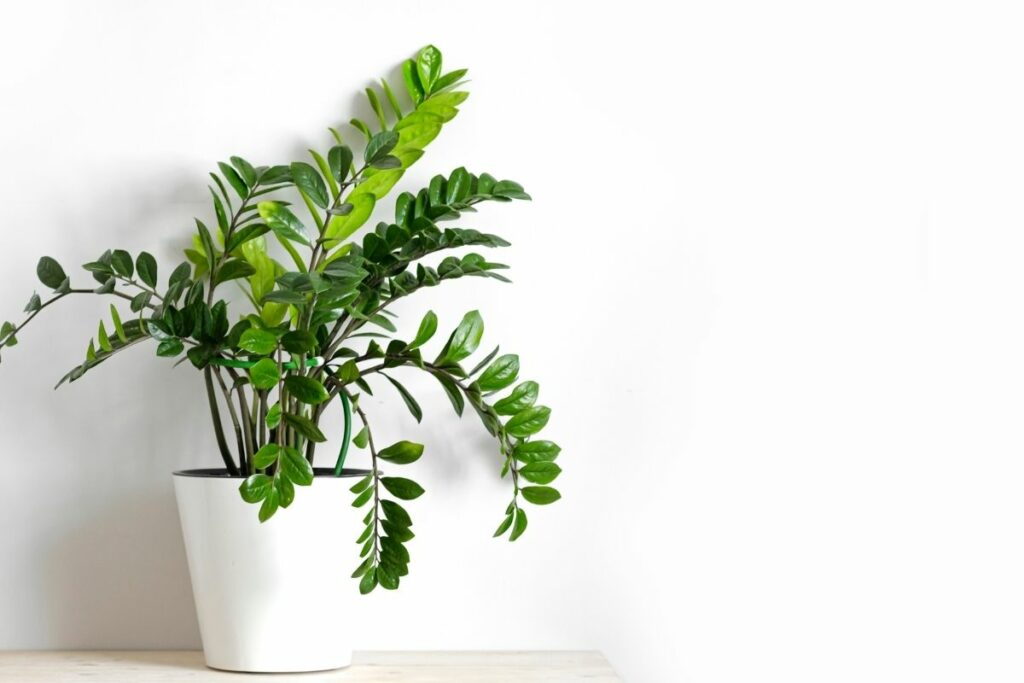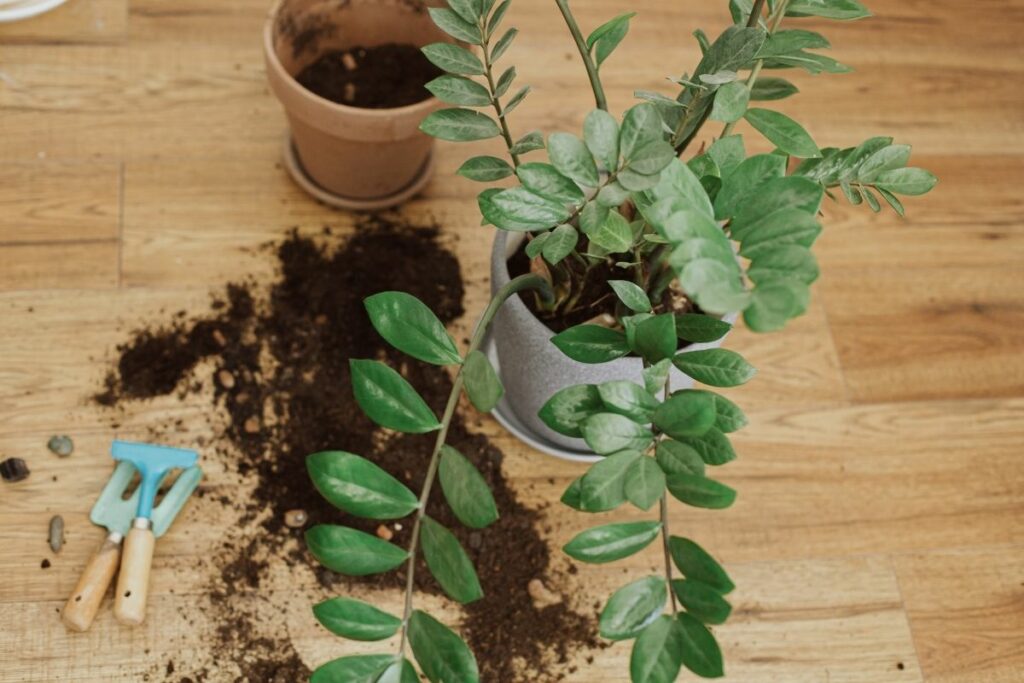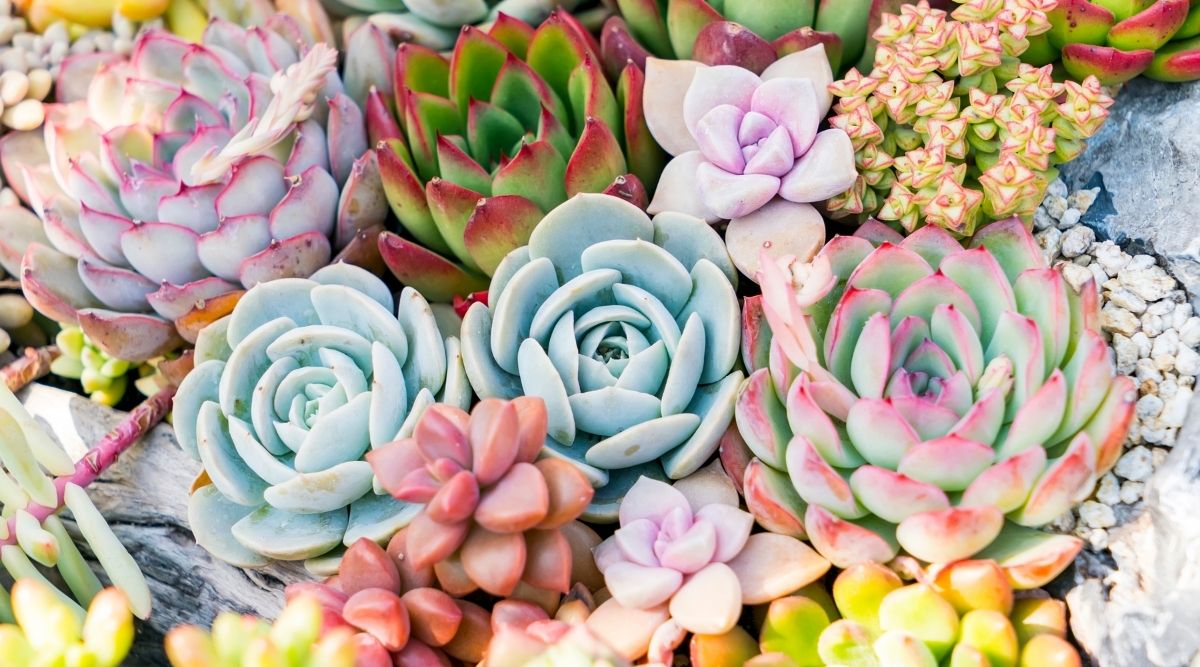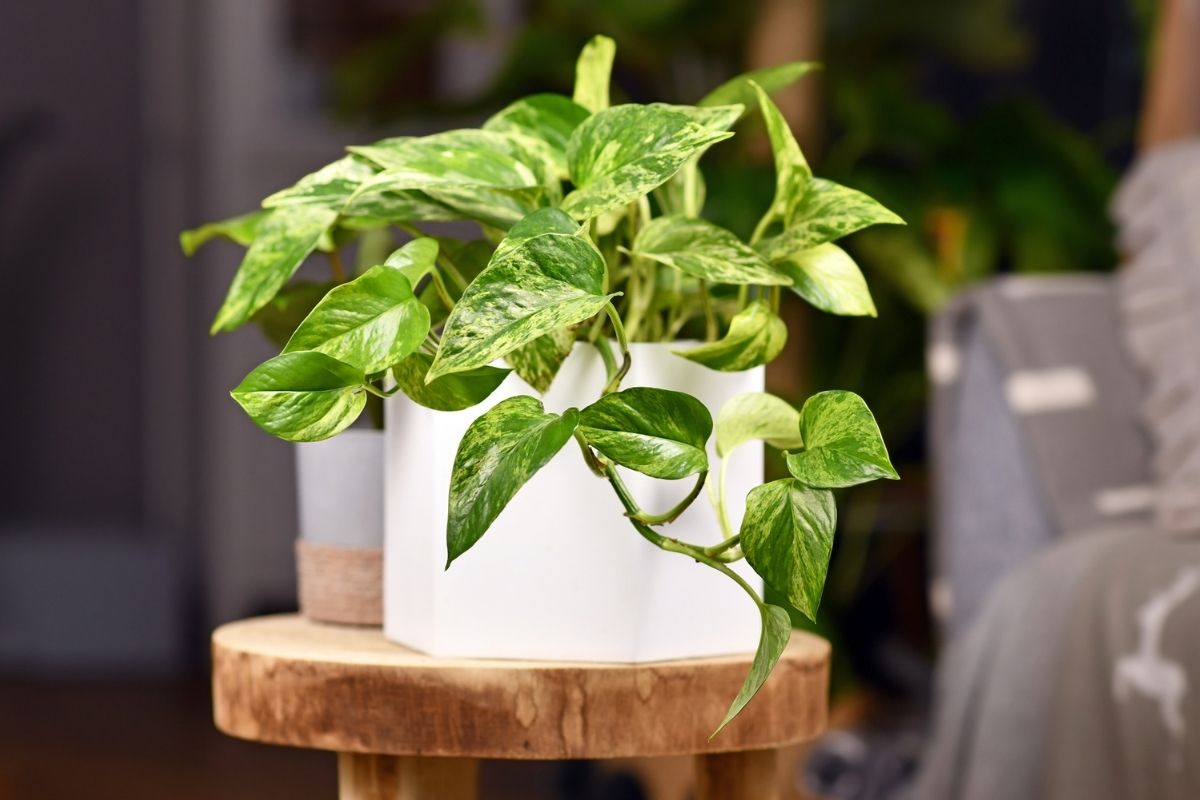
The ZZ plant is a wonderful indoor plant that has become pretty popular in recent years. It has a uniquely strong and bold appearance and is actually quite easy to take care of.
As such, it’s an ideal option if you want to add interest to an interior space, even if you’re a total newbie when it comes to houseplant care.
Whether you already have multiple ZZ plants and want to become a better grower, or you’re interested in purchasing a ZZ plant as your first houseplant, check out our ultimate guide below.
We cover everything, from how to increase your plant’s growth rate to health conditions to watch out for.
What Is A ZZ Plant?
The ZZ plant, otherwise known as the Zamioculcas Zamiifolia, is a tropical perennial plant that is native to Eastern Africa. It belongs to the Zamioculcas genus, which is a part of the Araceae family.
It has become a popular houseplant worldwide due to its ability to withstand a number of temperature conditions and light conditions.
Its popularity is also due to its wonderful and unique appearance. It has smooth, shiny leaves that transform into an emerald green color as the plant matures.
The leaves are numerous and grow from sturdy, thick stalks which give this plant a particularly strong and decorative feel.
How Fast Do ZZ Plants Grow?

ZZ plants have quite a slow growth rate. They can generally grow up to a height of 3 feet tall. If they are given the proper care and maintenance, they tend to grow by a foot each year.
Even though the ZZ plant is a hardy plant and can survive periods of neglect, if the neglect continues for too long, the ZZ plant’s growth will be stunted.
ZZ Plant Care Tips
To ensure that you’re providing the optimal conditions for your ZZ plant and thus giving it the best chance to grow to a healthy height at a healthy rate, check out our favorite care tips and tricks below.
Light Conditions
You might have heard that ZZ plants are low-light plants. However, this isn’t completely correct.
These plants can tolerate low light conditions for a long time, but they won’t thrive or grow appropriately without a good amount of light.
In fact, if you have a window in your home that gets bright, indirect sunlight, then chances are good that your ZZ plant would love to sit on the windowsill and bask in the sun all day every day.
Keep in mind that it is important that your plant doesn’t get too much direct sunlight at particularly hot times of the day.
If you don’t have a window with direct sunlight, you may want to consider getting a fluorescent bulb or LED light instead. These lights provide indirect lighting that mimics natural daylight.
They are great for growing plants because they simulate the amount of light that comes through the sky during daytime hours.
Temperature Requirements
ZZ plants like a warm atmosphere, and grow best when they are kept at an appropriate temperature. Generally speaking, you should keep your ZZ plant somewhere between 60°F and 80°F (16°C – 27°C).
For this reason, we recommend keeping your ZZ plant in a room that is particularly warm and draft-free.
Throughout the winter months, if you live in a cold climate, you will need to keep a close eye on the temperature of your ZZ plant’s environment.
Similarly, if you keep your ZZ plant outside, you will need to ensure that the temperature is appropriate.
Soil
The soil used for growing ZZ plants must meet certain requirements. First, the soil needs to be rich in nutrients.
Second, it should drain well so that excess water doesn’t collect around the roots. Apart from these requirements, ZZ plants aren’t particularly picky.
Some people use Miracle Gro® potting mix when they start their ZZ plants. This type of soil contains a lot of fertilizer and nutrients.
While this is fine for starting seeds, it is not recommended for growing more mature ZZ plants. You’ll find that regular potting soils work better for these types of plants.
Watering
While ZZ plants require less watering than other houseplants, they still need to be watered regularly.
It is important to understand when you need to water your ZZ plant and how much water your ZZ plant requires before you begin to water it.
Your ZZ plant should dry out completely before you water it again. To check if the soil is dry, poke your finger a few inches into the soil. If you feel any moisture, it should not be watered. If it feels very dry, you should water it.
To determine how much water to give your ZZ plant, simply place a few drops of water onto the surface of the soil.
Wait about 15 minutes and see what happens. If there is no change in the color of the soil, then you know that your plant needs more water.
You will want to ensure that the entirety of the potting mix is full of moisture after watering. To avoid leaving your ZZ plant sitting in excess water, we recommend putting the plant pot in the sink after watering.
When there is no more water draining from the plant, you can remove it from the sink.
Another way to avoid overwatering is to use an appropriate pot. If you can, we recommend planting your ZZ plant in a porous pot that isn’t too large.
This will ensure that the soil can dry out properly, avoiding health conditions such as root rot.
Pests And Diseases
The most common health condition that affects ZZ plants is root rot. If you notice that the leaves of your ZZ plant are turning yellow, this could be a sign of root rot.
This condition occurs as a consequence of over-watering. As such, to avoid it, follow the watering instructions above properly.
Your ZZ plant may also be susceptible to pest infestations such as aphids and mealybugs. These look like white and/or yellow spots on the leaves of your plant.
If you notice an infestation, you simply need to wash the leaves of your plant with a soap and water solution.
Common Problems With ZZ Plants
In addition to giving your ZZ plant the appropriate care and maintenance, such as ensuring they receive enough indirect light and are planted in a pot with sufficient drainage holes, it is also useful to know some common problems associated with the ZZ plant.
This way, if there is an issue with your plant, you can diagnose it and act quickly.
Brown, Crispy, Or Curling Leaves
If you notice the leaves of your ZZ plant becoming brown or crispy, this may be due to excess sunlight or not enough watering (or both!).
Generally, ZZ plants can go months without water showing little signs of ill-health, so if your ZZ plant is brown or crispy, it is really desperate!
To rectify this situation, make your watering schedule more frequent. You can also move your plant into a more shaded area if you think that it is currently receiving too much direct light.
If you keep your plant outside and you live in a particularly hot and dry area, bring it inside for a while.
Yellow Leaves
As briefly discussed above, yellowing leaves are a sign of root rot, which occurs as a consequence of over-watering.
If you notice that the tips of your ZZ plant’s leaves are starting to turn yellow, immediately cut back on watering your plant.
Becoming Root-Bound
If you notice the leaves of your ZZ plant browning, the soil is draining particularly quickly, or the roots are growing out of the drainage holes, your plant has likely become root-bound.
This occurs when the plant is overdue for repotting. Be sure to repot appropriately as your plant increases in size to avoid this.
Final Words
ZZ plants have their own unique characteristics and needs, but they are still just another type of houseplant. As such, they require the same basic care and attention as any other houseplant.
If you’re looking for a unique-looking plant that is easy to take care of, then the ZZ plant might be worth considering.
- Best Hanging Plant For Low Light - September 4, 2023
- Best Indoor Plants Florida - August 28, 2023
- Best Plants For Bathroom Smells - August 21, 2023








